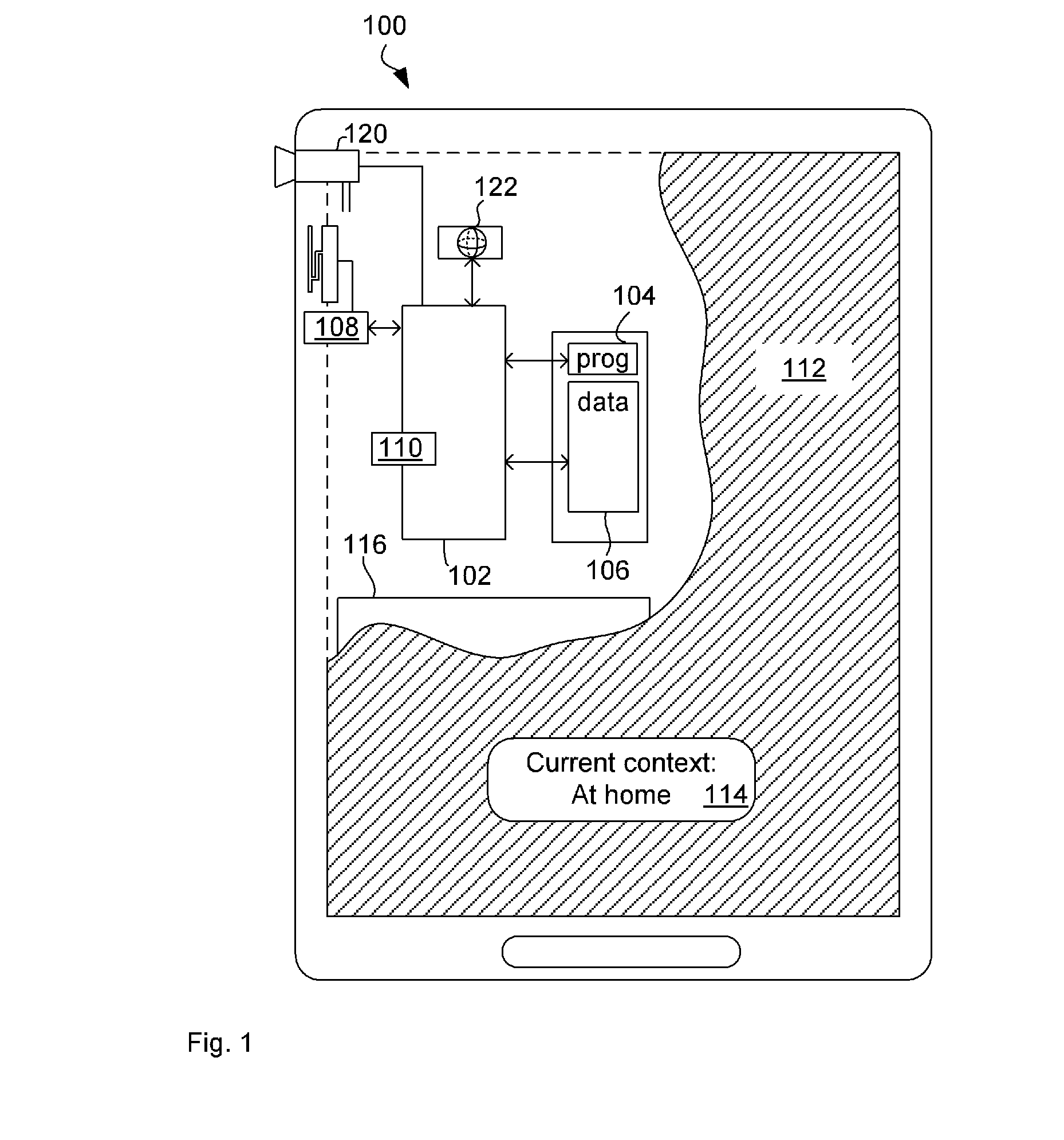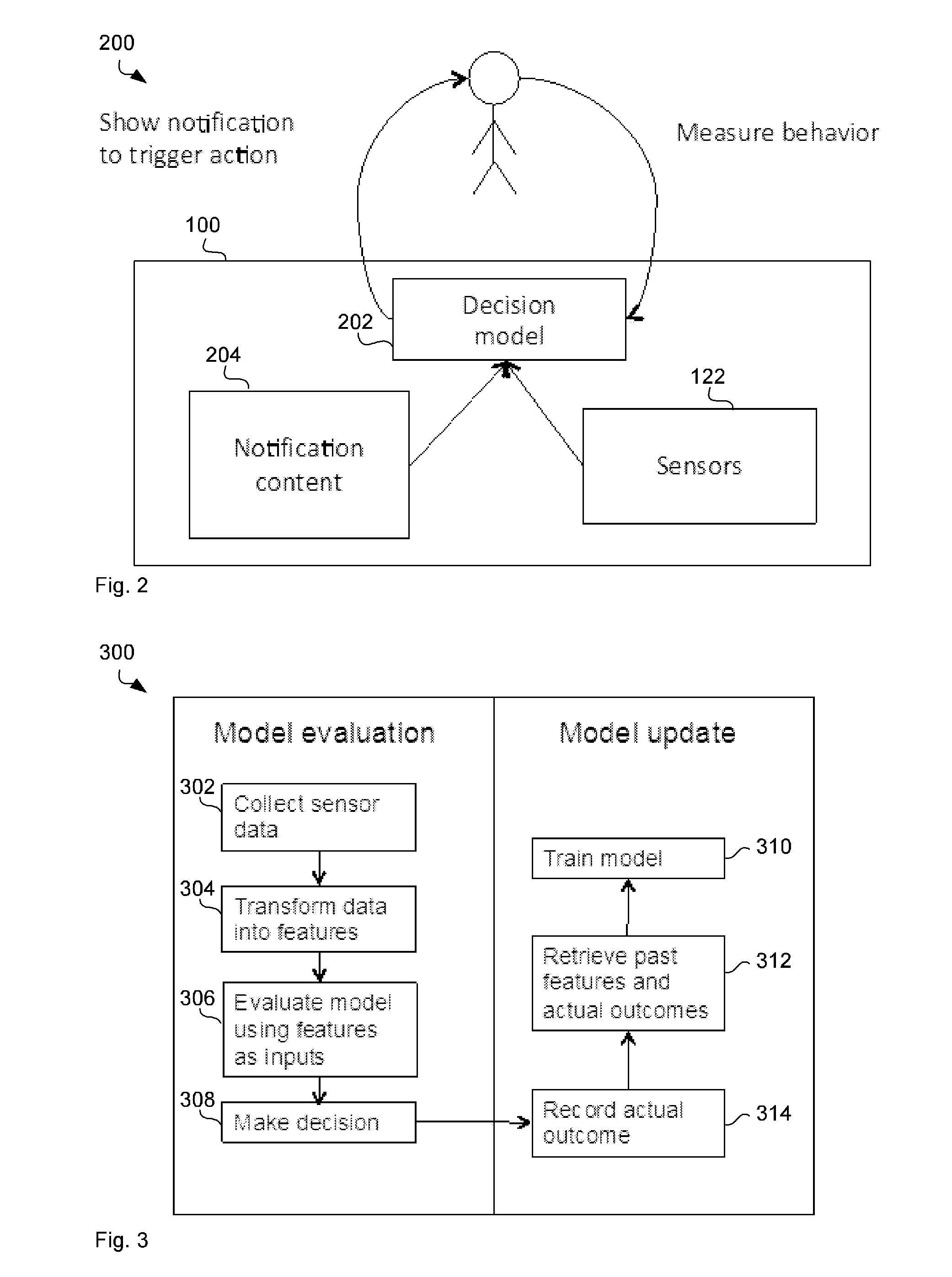Energy efficient mobile context collection
- Summary
- Abstract
- Description
- Claims
- Application Information
AI Technical Summary
Benefits of technology
Problems solved by technology
Method used
Image
Examples
example 1
Inferring Features Based on Logical Rules and Using a Linear Prediction Algorithm for Decision
[0164]Low cost sensor data is collected when a significant event, such as connection to a new WiFi access point, or the user becoming present on the device, triggers the collection. The following sensors are collected: 1) WiFi SSID (name of access point) 2) time 3) user presence. The system employs a simple rule based approach for learning the most common SSIDs during typical at home and at work hours and then uses the learned SSID names to detect when the user is at home or at work. The system uses a filter mechanism for deriving additional features from time, such as “weekday” / “weekend” and “morning” / “evening”. Using the collected data, the rule for SSIDs and the time filters, the system can then derive additional features from the SSID and time, firstly that the user is at home from the WiFi SSID and secondly that it is a weekday evening from the time.
[0165]The system can also infer valu...
example 2
Inferring Features Based on Relationships in Data
[0168]In the case of the above example, using past data it would be possible to find that the combination of “in bus” and “at home” had never occurred after 100 data points of “at home”, and therefore infer that the value of “in bus” is false with a high probability. This approach can be used for inferring values of high cost features, for which logical rules could not be created reliability, e.g. inferring “watching TV” when “at home” feature has the value false.
example 3
Inferring Features Based on Cached Value of High Cost Sensors and Fresh Values of Low Cost Sensors
[0169]Showing notifications, when the user is driving is to be avoided for most applications. However, detecting whether the user is in the car and driving or not requires tracking charger status and GPS, which has a high battery cost. If the current value of “in car” is unknown, but the past value was true and the value of the charging feature has not changed since, the system can use the cached value and reduce the frequency of collecting the expensive GPS sensor data.
PUM
 Login to view more
Login to view more Abstract
Description
Claims
Application Information
 Login to view more
Login to view more - R&D Engineer
- R&D Manager
- IP Professional
- Industry Leading Data Capabilities
- Powerful AI technology
- Patent DNA Extraction
Browse by: Latest US Patents, China's latest patents, Technical Efficacy Thesaurus, Application Domain, Technology Topic.
© 2024 PatSnap. All rights reserved.Legal|Privacy policy|Modern Slavery Act Transparency Statement|Sitemap



